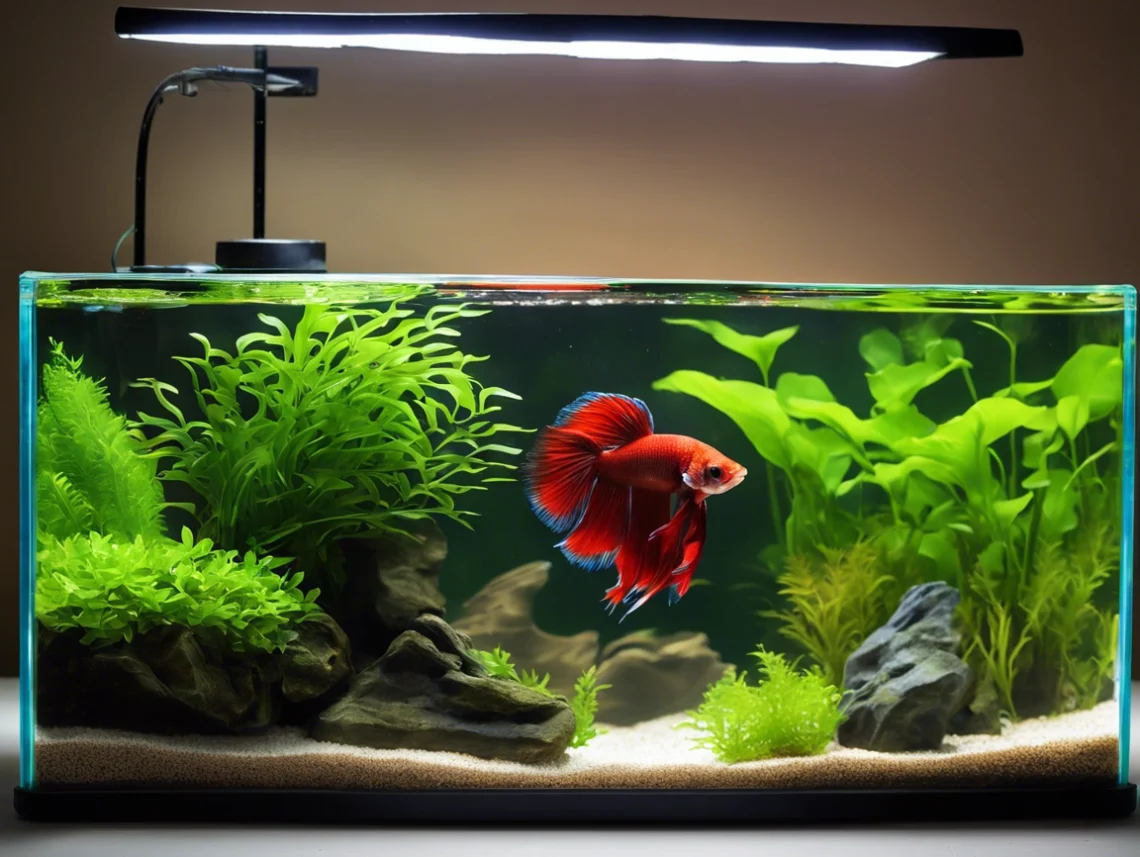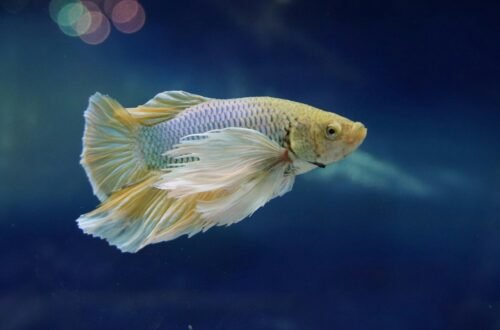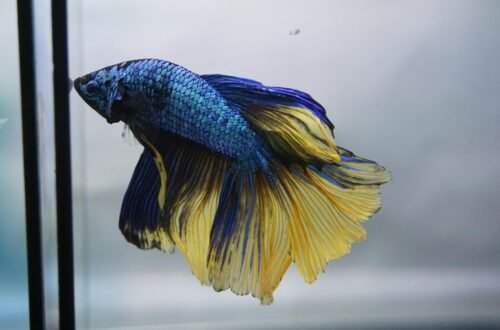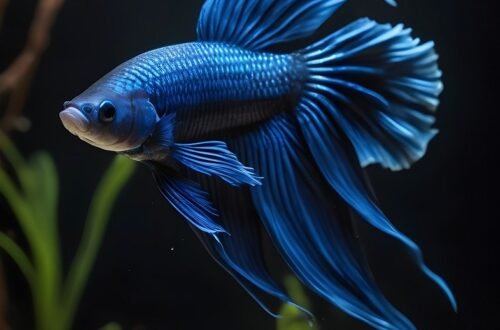Maintaining optimal water quality is essential for the health and longevity of your Betta fish. Poor water conditions can quickly lead to stress, illness, and even death in Bettas. Many Betta owners, especially beginners, underestimate how crucial it is to keep their water clean and balanced. In this guide, we’ll explore everything you need to know about Betta fish water quality, how to maintain it, and the steps you can take to ensure your Betta thrives in a clean and healthy environment.
Why Water Quality Is Important for Betta Fish
Bettas are hardy fish, but like all aquarium pets, they are sensitive to changes in water conditions. Water quality directly affects their immune system, behavior, and overall health. Poor water conditions can lead to common diseases like fin rot, ich, or swim bladder disorder.
In the wild, Bettas live in relatively clean waters that naturally regulate harmful chemicals. In a closed environment like an aquarium, it’s your responsibility to maintain the right conditions to keep your Betta healthy.
For more on identifying and treating Betta illnesses, check out How to Prevent and Treat Common Betta Fish Diseases.
Key Water Parameters to Monitor
Several key water parameters should be regularly monitored to ensure your Betta’s environment remains clean and healthy. These include ammonia, nitrites, nitrates, pH, and temperature.
1. Ammonia, Nitrite, and Nitrate Levels
- Ammonia: Ammonia is produced by fish waste, uneaten food, and decaying organic matter. Even small amounts of ammonia can be toxic to Bettas, causing stress, burns, and organ damage.
- Nitrites: After ammonia breaks down, it turns into nitrites, which are also harmful to Bettas. Nitrite poisoning reduces oxygen in the bloodstream, leading to lethargy and labored breathing.
- Nitrates: Nitrates are less toxic but should still be kept under control. High nitrate levels can cause stress, algae growth, and long-term health problems.
Safe Levels:
- Ammonia: 0 ppm (parts per million)
- Nitrite: 0 ppm
- Nitrate: Below 20 ppm
Regular water testing is essential to ensure these levels remain safe. If ammonia or nitrites are present, perform immediate water changes and check your filtration system.
2. pH Levels
Betta fish prefer slightly acidic to neutral water. The ideal pH range for Bettas is between 6.5 and 7.5. Maintaining stable pH is important because sudden shifts in pH can cause stress and weaken your Betta’s immune system.
- Tip: Regularly test the pH with a water testing kit and use pH buffers if needed to maintain stable levels. Keep in mind that natural decorations like driftwood can lower pH over time.
3. Temperature
Bettas are tropical fish, so maintaining a consistent water temperature is critical. The ideal temperature range for Bettas is between 76-82°F. Fluctuations in temperature can lead to stress, lethargy, and an increased risk of illness.
- Tip: Use a reliable aquarium heater and thermometer to monitor the water temperature. Sudden changes in temperature should be avoided, as Bettas are sensitive to cold water.
For more on setting up the perfect tank environment for your Betta, check out Setting Up a Betta Fish Tank: A Step-by-Step Guide for Beginners.
How to Maintain Water Quality in a Betta Tank
Maintaining optimal water quality requires consistent care and attention. Here are the steps you should take to keep your Betta’s environment clean and healthy:
1. Perform Regular Water Changes
One of the most effective ways to maintain water quality is through regular water changes. Water changes help remove toxins, excess nutrients, and waste from the tank, which can build up over time.
- How often to change the water: For a 5-gallon tank, perform a 25-30% water change once a week. If your tank is smaller, more frequent water changes (every 3-4 days) may be needed to maintain water quality.
- Dechlorinate the water: Always use a water conditioner to remove chlorine and chloramines from tap water before adding it to your tank. These chemicals are harmful to Bettas.
2. Install a Filter
A filter helps keep the water clean by removing debris, waste, and harmful chemicals like ammonia and nitrites. Filters also promote water circulation, which improves oxygenation and prevents stagnant water.
- Tip: Choose a filter with an adjustable flow since Bettas prefer calm water. Strong currents can stress them out, so keep the flow rate low to medium.
- Cleaning the filter: Rinse the filter media in old tank water (not tap water) during water changes to preserve beneficial bacteria that help break down waste.
3. Use Live Plants
Live plants are not only a beautiful addition to your Betta tank but also a natural way to improve water quality. Plants absorb nitrates, helping to reduce harmful chemicals and promote a balanced ecosystem.
- Best plants for Betta tanks: Consider adding plants like Java Fern, Anubias, and Amazon Sword, which are easy to care for and thrive in Betta environments.
- Tip: Monitor your plants’ growth and trim them regularly to prevent overgrowth, which can affect water flow.
For more on creating a Betta-friendly environment, visit How to Create a Natural Betta Habitat with Live Plants.
4. Test Water Regularly
Water testing is the only way to ensure that your tank’s water parameters are within safe limits. Invest in a reliable water test kit that measures ammonia, nitrites, nitrates, and pH levels.
- How often to test: Test the water weekly, especially before and after water changes. This helps you catch any issues before they become a serious problem.
5. Avoid Overfeeding
Overfeeding is a common cause of poor water quality in Betta tanks. Uneaten food decays and releases ammonia, which can quickly spike toxin levels.
- Tip: Feed your Betta only what it can eat in 2-3 minutes, twice a day. Remove any uneaten food after feeding to prevent it from decomposing in the water.
For tips on feeding, check out Feeding Your Betta: The Ideal Diet for Health and Longevity.
Signs of Poor Water Quality in Betta Fish
If the water quality in your Betta’s tank deteriorates, your fish will start to show signs of stress or illness. Watch out for the following warning signs:
- Lethargy: A sluggish or inactive Betta may be suffering from poor water quality or improper temperature.
- Gasping at the Surface: If your Betta is constantly at the surface gulping for air, it could indicate low oxygen levels in the water or high ammonia/nitrite levels.
- Fin Rot: Ragged or decaying fins are often caused by poor water quality or bacterial infections that develop in unclean environments.
- Clamped Fins: Bettas with clamped fins (fins held tightly against their bodies) may be experiencing stress due to poor water conditions or toxins.
Tip: If you notice any of these symptoms, test the water immediately and perform a partial water change. It’s also important to monitor your Betta for other signs of illness or stress.
How to Fix Poor Water Quality
If you find that your water quality has deteriorated, take the following steps to improve it:
- Perform a partial water change: Replace 25-50% of the water to dilute toxins and refresh the tank.
- Check and adjust filtration: Ensure the filter is working properly and clean the filter media if necessary.
- Test the water: After making changes, retest the water to ensure parameters have returned to safe levels.
- Monitor your Betta: Keep a close eye on your Betta for any improvements in behavior or signs of stress.
Conclusion
Maintaining optimal water quality is the foundation of Betta fish care. By performing regular water changes, using a filter, and monitoring key water parameters like ammonia, nitrites, and pH, you can create a clean and healthy environment where your Betta can thrive. Remember, a healthy tank means a happy, vibrant Betta, so invest time in keeping their water clean and balanced for long-term success.
For more tips on Betta care, visit Understanding Betta Fish Behavior: What Your Betta Is Trying to Tell You.
FAQs
1. How often should I change my Betta’s water?
Perform a 25-30% water change once a week to maintain water quality. Smaller tanks may require more frequent changes.
2. What should I do if my Betta’s water quality tests show high ammonia levels?
If ammonia levels are high, perform an immediate partial water change and check your filter. You may
also want to reduce feeding until the levels are under control.
3. Can I use tap water for my Betta tank?
Yes, but always use a water conditioner to remove harmful chlorine and chloramines before adding it to the tank.
4. How do live plants help with water quality?
Live plants absorb nitrates and other chemicals, helping to keep water clean and balanced. They also provide oxygen, making the tank healthier for your Betta.
5. Why is my Betta gasping at the surface?
This could be a sign of low oxygen levels or poor water quality. Test the water for ammonia and nitrites, and ensure proper filtration and aeration.







4 Comments on “The Best way to Keep Betta Fish Water Quality: Maintain a Clean and Healthy Environment”